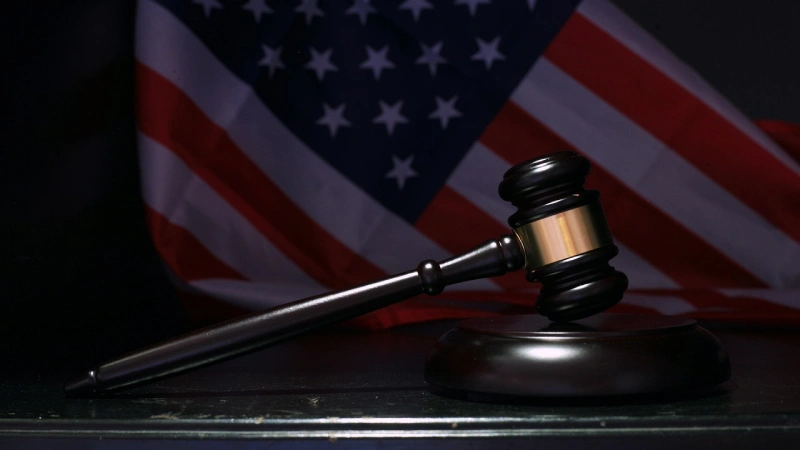Table of Contents
Highlights.
- June 2025 marked a crucial period for digital asset regulation as U.S. and international agencies revised numerous oversights.
- The Department of Justice narrowed its enforcement focus to target the criminal misuse of funds, while the SEC adopted a more collaborative approach.
- Congress advanced two major stablecoin bills, with states like Oregon pursuing legal action.
June 2025 was a transformative month for digital asset regulation. Government agencies, lawmakers, and international regulators made significant moves that affected everything from how cryptocurrencies are policed to how the central bank digital currencies (CBDCs) are introduced and tested. These legal developments reflect a broad effort to clarify rules, enforce transparency, and establish stronger compliance frameworks for digital assets.
DOJ and SEC Refocus Crypto Oversight.
One of the most notable developments came from the U.S. Department of Justice (DOJ), which announced a strategic shift in its approach to cryptocurrency enforcement through a newly issued directive commonly referred to as the “Blanche Memo.” In previous years, the DOJ had cast a wide net, targeting a broad array of crypto activities.
However, the agency is now narrowing its focus, concentrating on high-stakes criminal conduct such as money laundering, financing of terrorism, and illegal drug trafficking facilitated through digital currencies. This change marks a more targeted approach designed to address genuinely harmful behavior without placing unnecessary burdens on legitimate businesses.

This was complemented by a significant shift in tone and policy at the Securities and Exchange Commission (SEC). Paul Atkins, recently appointed as SEC Chair, signaled a departure from the agency’s historically aggressive stance. Rather than pre-emptively prosecuting companies over digital tokens deemed as unregistered securities, the SEC is now prioritizing open dialogue with crypto firms.
The aim is to understand emerging technologies and business models while crafting tailored regulatory frameworks. This more collaborative attitude has been welcomed by many in the crypto space who have long sought clearer guidance from regulators.
Legislative Activity Surrounding Stablecoins.
The U.S. legislative branch has taken significant steps toward establishing a well-defined regulatory framework for stablecoins, which are digital tokens backed by fiat currencies, such as the U.S. dollar. In June, the Senate passed the GENIUS Act, a bipartisan bill designed to promote transparency, investor protection, and financial stability in the emerging stablecoin industry.
The legislation requires that all large stablecoin issuers maintain full 1:1 reserves held in liquid, verifiable assets such as cash or Treasury bonds. Monthly audit disclosures are also mandated, adding a layer of public accountability.
Additionally, the GENIUS Act imposes strict anti-money laundering obligations and outlines requirements for operational integrity that mirror those used in the traditional banking sector. An important provision within the bill prohibits elected officials from launching or managing stablecoin projects, a clause intended to prevent conflicts of interest and unethical behavior.

Meanwhile, the House of Representatives moved forward with a parallel proposal known as the STABLE Act. Although it shares the GENIUS Act’s goal of regulating stablecoins, the STABLE Act places a heavier emphasis on user privacy and data protection. Lawmakers behind the bill raised concerns about how stablecoins could potentially be used to track consumer behavior and proposed additional safeguards to prevent misuse. The simultaneous advancement of these two bills shows the major urgency and complexity of stablecoin regulation in the United States.
Banking Agencies Loosen Crypto Restrictions.
U.S. banking regulators also introduced changes in June that signaled a softening of their previous positions on digital asset engagement. The Federal Reserve rescinded two supervisory letters, SR 22-6 and SR 23-8, that had compelled banks to notify authorities before engaging in crypto-related activities. This rollback was mirrored by the Federal Deposit Insurance Corporation (FDIC), which removed a similar requirement for pre-approval, thereby simplifying compliance for financial institutions.
This deregulatory step effectively lowers the threshold for traditional banks to participate in the digital assets economy. Financial institutions can now explore partnerships with crypto firms, offer custody solutions, or even issue their own digital assets without having to navigate as many bureaucratic hurdles. However, these opportunities still come with expectations around proper risk management and cybersecurity protections.

Simultaneously, the Commodity Futures Trading Commission (CFTC) eliminated an advisory issued in 2018 that had created confusion in the derivatives market. This move clarified the rules for trading crypto-based futures and options, giving institutions the green light to explore innovative financial instruments within a clearer legal framework. These changes are likely to stimulate growth in crypto derivatives trading among regulated entities.
Legal Challenges at the State Level and in U.S. Territories.
As federal agencies adjust their stance on digital assets, state governments are stepping in to fill the enforcement gap. One prominent example was Oregon Attorney General Dan Rayfield’s lawsuit against Coinbase, the largest U.S.-based crypto exchange. The state alleges that Coinbase has been offering unregistered securities to Oregon residents, thereby violating the state’s securities laws. This case highlights how states are asserting more control over how crypto firms operate within their borders.
The implications are significant. While some states may adopt crypto-friendly regulations to attract innovation and businesses, others, such as Oregon, are tightening the reins. This patchwork approach creates challenges for companies that must now comply with a wide array of state laws, potentially slowing down national expansion plans and increasing legal risks.
In U.S. territories, Puerto Rico made headlines when Representative Nydia Velázquez introduced legislation aimed at revising the tax treatment of digital assets. The bill proposes to close a loophole that allows some U.S. investors to avoid federal taxes on income from digital assets by claiming Puerto Rican residency. Specifically, the legislation would modify the application of sourcing rules for digital assets income of Puerto Rican residents, effectively ending the exemption for crypto-derived income.

Development in CBDCs and European Regulations.
June also witnessed significant global developments in the realm of central digital currencies, also known as CBDCs. Nepal’s central bank launched a pilot for a national digital currency pegged to the Nepalese rupee. The goal is to assess how a government-backed digital currency can enhance domestic payment systems, reduce reliance on cash, and facilitate more secure transactions. Although the pilot is still in its early stages, it reflects the growing interest among developing nations in utilizing digital currencies to enhance their national financial infrastructure.
In Europe, the implementation of the Markets in Crypto-Assets (MiCA) regulation reached a new milestone. Originally passed in 2024, MiCA is now fully enforceable, and national regulators across the European Union have begun issuing licenses to qualifying crypto firms. Malta granted operational approval to companies such as Gemini, Crypto.com, and OKX, signaling its commitment to becoming a leading crypto hub under the EU’s regulatory umbrella. Meanwhile, Luxembourg is reviewing Coinbase’s application, which, if approved, would allow the company to expand its services throughout the EU.
MiCA is designed to harmonize crypto regulation across the 27 member states, providing a consistent legal framework that enhances consumer protection and financial transparency. For crypto firms, this offers the advantage of a unified market where they can operate across borders under one regulatory standard.
The NFT Question in Legal Terms.

Non-fungible tokens (NFTs) also entered the legal spotlight, as the U.S. Congress held hearings in both the House and Senate to discuss the legal nature of NFTs, specifically whether some NFTs should be classified as securities. Lawmakers are particularly concerned about NFTs that promise future profits or are tied to revenue-generating ventures, as these may fall under existing securities regulations.
Currently, most NFTs are treated as digital assets, which makes them exempt from the types of oversight typically applied to stocks and bonds. However, the emergence of financialized NFTs, which are mainly tied to business models, royalties, or investment schemes, has muddied the waters. If regulators determine that certain types of NFTs qualify as investment contracts, platforms facilitating their sale could face stricter disclosure, registration, and reporting requirements.
This evolving legal question is significant for creators, investors, and platforms alike. The hearings reflect the growing concern that regulatory bodies must keep pace with the rapidly changing NFT market to ensure consumer protection without stifling creativity.
Political Influence and Regulatory Ethics.
The Trump administration’s ongoing involvement in crypto regulation has been a polarizing issue. In June, the administration continued to dismantle DOJ units that had previously been tasked with investigating fraud and misconduct in the cryptocurrency space. At the same time, President Trump encouraged the SEC to adopt a less aggressive enforcement posture. Supporters argue that these changes foster innovation and attract more capital into the U.S. economy.
However, these deregulatory efforts have not been without controversy. Critics raise ethical concerns, particularly regarding Trump’s personal ties to various cryptocurrency ventures. For instance, the launch of the $Trump memecoin has raised questions about conflicts of interest. Such developments have prompted increased scrutiny from watchdog groups and lawmakers who fear the blending of political power with private financial gain.

These episodes underscore the importance of transparent and impartial regulation, particularly when political figures are directly or indirectly involved in the industry they are shaping.
Conclusion.
June 2025 represented a pivotal moment for digital assets regulation. Legal frameworks around stablecoins solidified with congressional activity, while banking agencies softened their stance on crypto engagement. State-level lawsuits and tax reform proposals demonstrated the complexity of operating across multiple jurisdictions.
Internationally, the rollout of CBDC pilots and the implementation of MiCA in Europe illustrated growing institutional engagement with digital currencies. Even as the NFT space awaited regulatory definitions, platforms continued to expand offerings under evolving legal conditions. With each regulatory update, the digital assets ecosystem becomes more structured, enhancing legitimacy while introducing new responsibilities for participants.